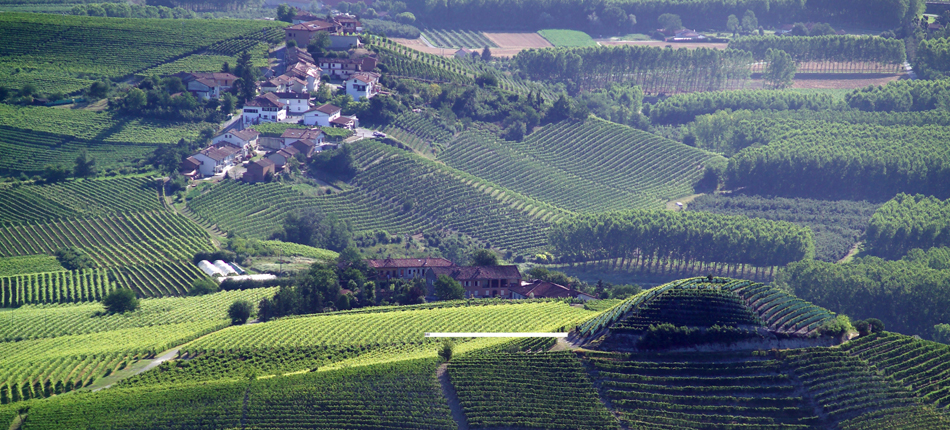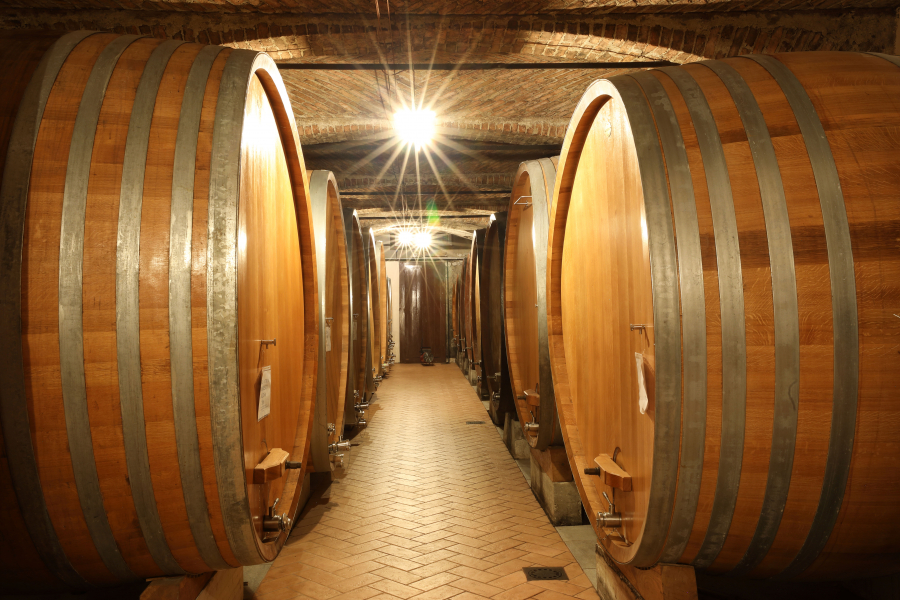Oddero is one of the great, historic, traditional Barolo houses with a long history spanning over 200 years. There are mentions of the Oddero family in La Morra as far back as the 1700s, though the family was likely there even before that point. The winery was among the first producers to estate bottle their Barolo – in the late 1800s, a time when most wine was sold in bulk either by demijohn or barrel. There are even records of their wine being sold to the USA at that point as well. It was Giacomo Oddero (born 1926) and his brother Luigi (born 1928) who brought the winery into the modern era. They renovated their ancient farmhouse, elevated their wine quality, and extended their vineyard holdings. For years, the estate has quietly sold a good portion of its wines to a loyal clientele, much of it to restaurants in Italy. As such, they have remained somewhat under-the-radar amongst the tier of traditional Baroli.
Giacomo’s daughter Mariacristina joined the winery in 1997 after studying Agronomic Science and Enology at the University of Torino. But after a few years, she and Luigi, both very strong-headed characters, had a challenging time working together and decided to separate. She kept the historic cellars in La Morra and much of the historic vineyards, and he formed his own winery in 2006, called Luigi Oddero e Figli. Today, Mariacristina’s son Pietro and niece Isabella are taking over and represent the seventh generation in the family to run the winery. They are both hugely committed to raising the reputation of the winery and have made significant investments in the vineyards and cellar to continue to help elevate the level of quality at this venerable estate.
Today, there are few estates in Barolo with as impressive a lineup of vineyard holdings as Oddero from legendary Crus such as Vigna Rionda and Rocche di Castiglione to Brunate, Villero, Bussia, and others (most recently Monvigliero!). Overall, Oddero has 35 hectares planted with about half of that in Nebbiolo for Barolo and Barbaresco. They also have six hectares of the prized Piemontese hazelnuts. Today, all of the Nebbiolo vineyards are also certified organic, with the balance of the vineyards in official conversion.
In the cellar, their Barolo and Barbaresco follow a traditional Nebbiolo protocol. The wines are fermented in stainless steel with usually a 20-25 day maceration followed by thirty to forty months depending on cru and vintage in large, neutral botti. The Odderos were one of the early adopters of Austrian oak (Stockinger) which is now more prevalent in some top Piedmontese cellars. Besides Barolo, they make a delicious Barbera d’Alba and an amazing Langhe Nebbiolo made entirely from Barolo-zoned fruit - both offering tremendous quality and value. Their straight Barolo is a calling card for the winery, with amazing value as well as its origins from 3 top Crus: Bricco Fiasco, Bricco Chiesa, and Capalot.
The real flagship for Oddero, of course, is their vast array of top single-cru wines. These wines are produced in limited quantities and are often held for several years in bottle before release. And their array of Grand Cru sites is virtually incomparable in all of Piedmont, and a veritable “Treasure Chest” for any serious lover of Barolo.
CRUS REPRESENTED
BARBARESCO
Commune of Barbaresco
Gallina: Some of the most round, sexy and approachable Neive Barbarescos are found in Gallina. The Barbarescos tend to be silky, perfumed and easy to drink young, which is somewhat out of character for Neive. The best wines offer long and broad drinking windows. (Vinous.com)
BAROLO
Commune of La Morra
Brunate (Brunate straddles the border of La Morra and Barolo, Oddero’s parcel is in La Morra): Brunate, which straddles the Barolo/La Morra border yields dark, powerful, tannic wines built for aging. Black fruit, tar, licorice, violets, dark spices, and balsamic notes are some of the signatures of this great site. (Vinous.com)
Commune of Castiglione Falletto
Villero: This large vineyard is also quite varied in its exposures and overall quality level. Barolos from Villero are typically deeply spiced, balsamic-inflected wines with dark fruit and firm tannins. The wines often need time in the bottle to fully open up, but past a certain point, the capacity for positive development appears limited. (Vinous.com)
Rocche di Castiglione: This very steep site in Castiglione Falletto yields Barolos that stand out for their lifted aromatics, detail, and nuance. Rocche Barolos often drink well young yet also age with notable grace. These are among the most sensual and regal of all Barolos. (Vinous.com)
Commune of Verduno
Monvigliero: Monvigliero is the most important vineyard in Verduno. Barolos from Monvigliero are intensely aromatic, with crushed floral notes, savory herb, and anise notes. Silky tannins, medium-bodied structure, and silky tannins are some of the other signatures. These are some of the most distinctive wines made in Barolo. (Vinous.com)
Commune of Serralunga d’Alba
Rionda: Vigna Rionda yields the most perfumed, sensual, and mystical of all Barolos. Rose petals, violets, sweet spices, nuanced fruit, silky tannins, and often an element of weightlessness make Rionda the Musigny of Barolo. (Vinous.com)
Commune of Monforte d’Alba
Bussia (Bussia is a very large cru, Oddero’s Vigna Mondoca is right near the famed Cicala parcel of Bussia): Look at Bussia on the map. The surface area is roughly equivalent to that of Serralunga, where vineyard designations are much more specific. Taken as an area, the designation "Bussia" is too large to be meaningful. However, there are a number of fabulous sites within Bussia that are of note. These include Cicala, Romirasco, Pianpolvere Soprana. (Vinous.com)
Oddero’s Barolo "Normale" (non-vineyard designated)
This wine is normally sourced from two crus: Santa Maria Bricco Chiesa in La Morra and the famed Bricco Fiasco cru in Castiglione Falletto.
- Bricco Chiesa: Bricco Chiesa is the historic production core of our company, “the home vineyard”, in fact. At the foot of the church of Santa Maria della Neve, which in 1400 was referred to as Sancta Maria de Marcenasco, there is a beautiful sequence of regular rows, facing south, from 210 to 290 m above sea level. The soil is mainly made of fine clay, with sand and calcium carbonate. Here, digging by hand to build a well, 9 meters deep, in the upper part, where today the road to La Morra runs, in 1928 a fish skeleton from the Tortonian Miocene emerged, perfectly preserved and today on display in our cellar, thanks to the kind bequest of the F. Eusebio Museum in Alba. (Oddero.com)
- Bricco Fiasco: Barolos from Fiasco are powerful and tannic, even with bottle age. Iron, ferrous notes, earthiness, tobacco, and red-toned fruit are all typical. Barolos from Fiasco have proven to be extremely age-worthy, beginning with Scavino's 1978 Bric del Fiasc, which is fabulous, even after all these years. (Vinous.com)






